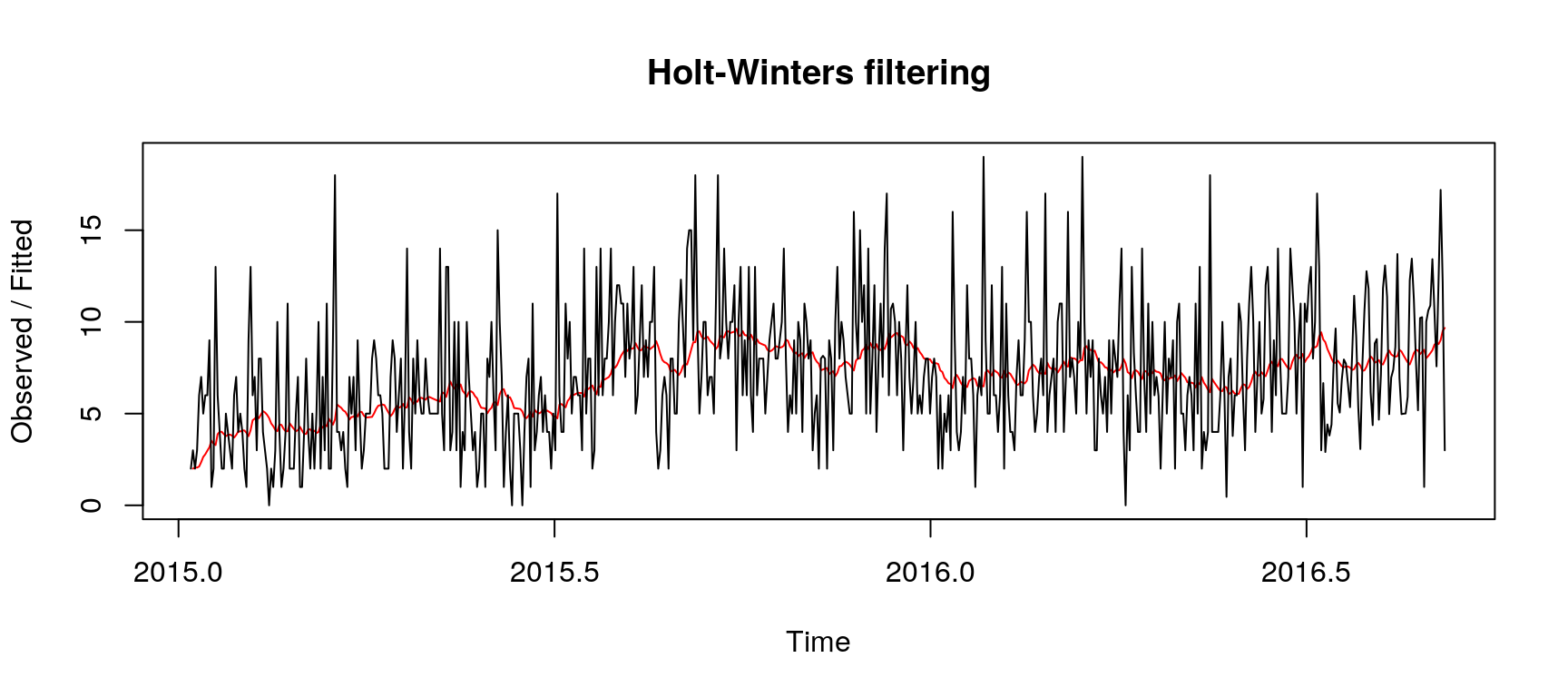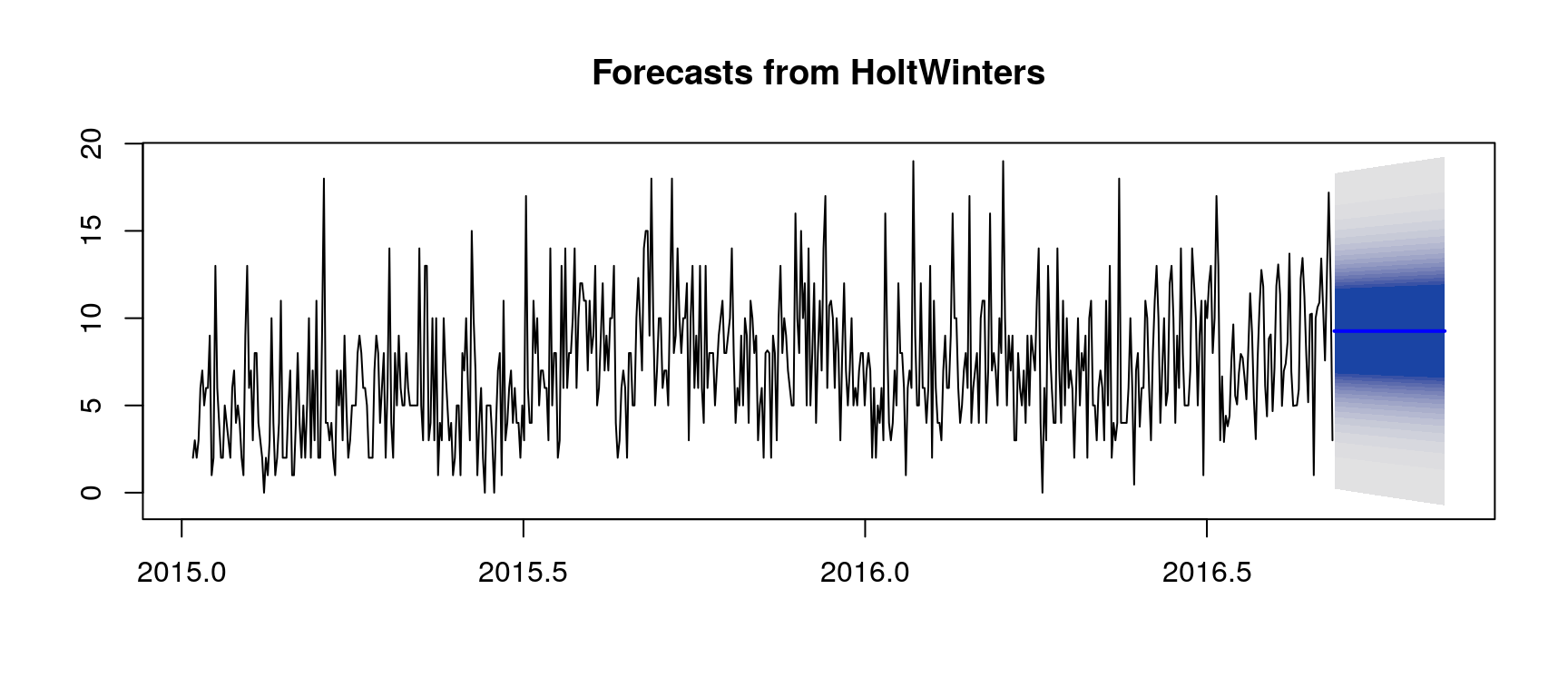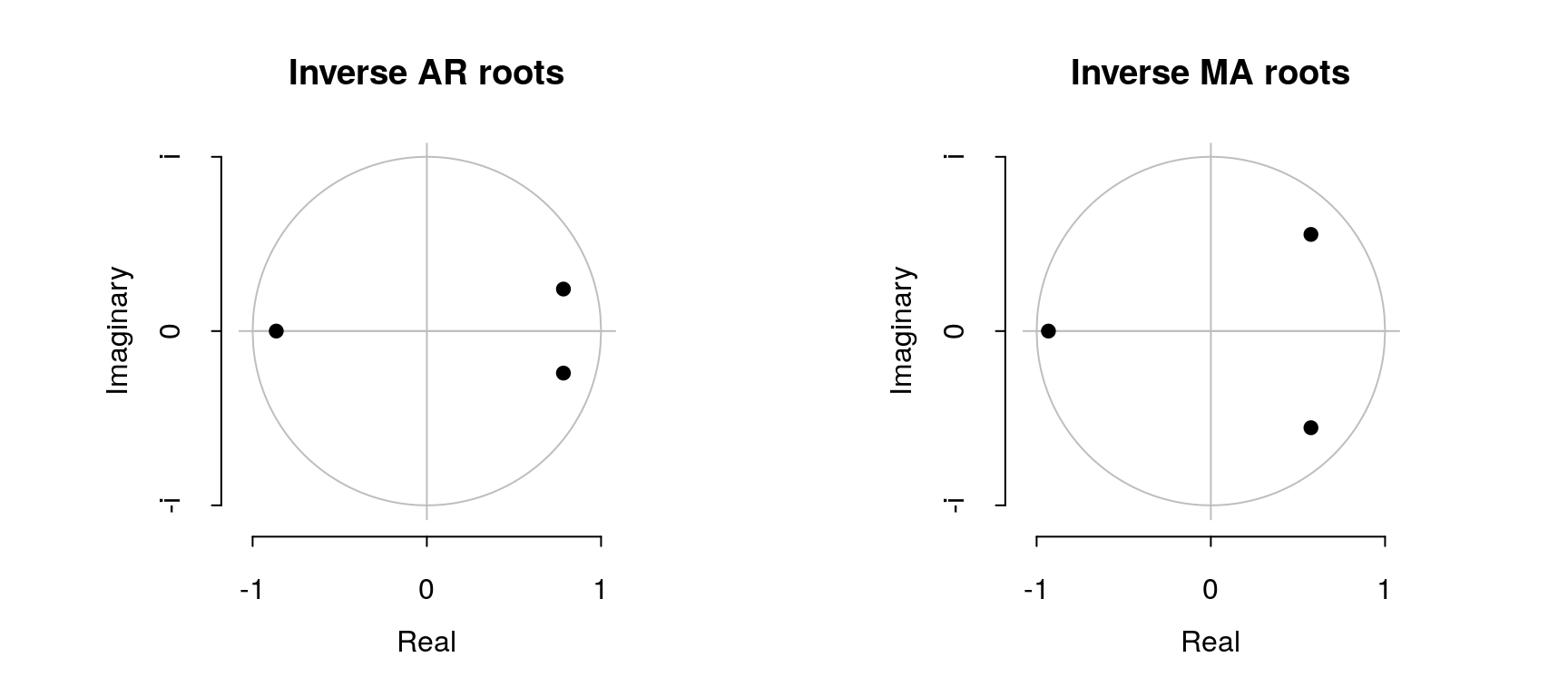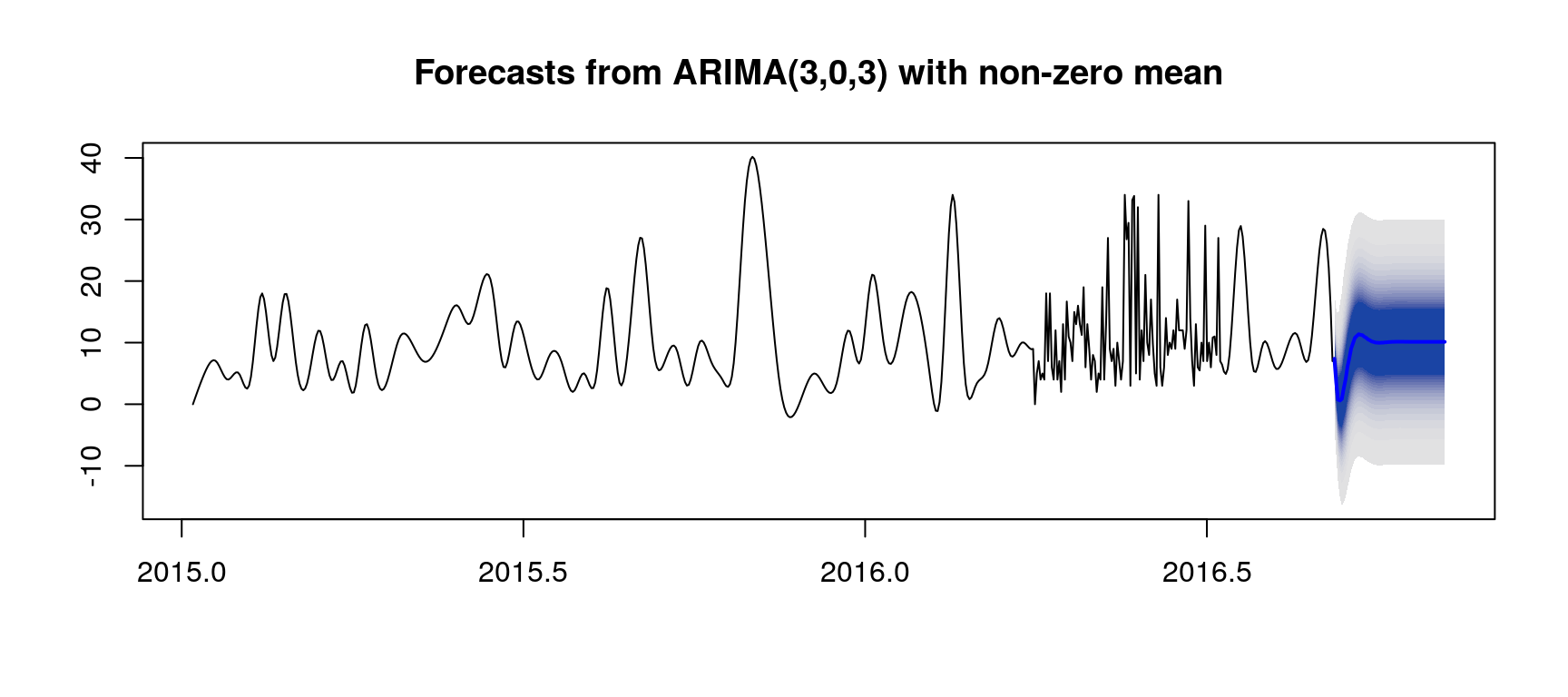Predicting Web Traffic: HoltWinters & ARIMA
Note: this post is a replication of our kernel published on Kaggle—Preliminary Investigation: HoltWinters & ARIMA.
Here we present a very simplistic, to the point of being rather naive, approach to the Kaggle’s Web Traffic Time Series Forecasting problem. Some aspects of dealing with time series in R are from A Little Book of R For Time Series (Coghlan, 2015). Each row (i.e., page) is considered individually, which might fail to capture correlations and other interactions between pages.
Forecasting Web Traffic for the Entire Data Set
setnames(keys, "Page", "PageWithDate")
n <- nchar("_0000-00-00")
keys[, Page := substr(PageWithDate, 0, nchar(PageWithDate) - n)]
keys[, Date := substr(PageWithDate, nchar(PageWithDate) - n + 2, nchar(PageWithDate))]
rm (n)
# 1: ARIMA or 2: HoltWinters
kMethod <- 2
kH <- 31 + 28 + 1 # from Jan 1, 2017 to Mar 1, 2017
kUseTsClean <- TRUE
kSmoothOrder <- 0 # no smoothing if <= 0
i <- 1
forecastWebTraffic <- function(x) {
row <- unname(unlist(x))
predictions <- tryCatch({
if (kUseTsClean) {
rowTs <- tsclean(ts(row, frequency = 365.25, start = c(2015, 7, 1)))
} else {
# outliers (Hampel's test)
minMaxThreshold <- 3 * c(-1, 1) * 1.48 * mad(row, na.rm = TRUE)
+ median(row, na.rm = TRUE)
row[row < minMaxThreshold[1]] <- NA
row[row > minMaxThreshold[2]] <- NA
# missing values
rowTs <- ts(row, frequency = 365.25, start = c(2015, 7, 1))
if (anyNA(rowTs)) {
rowTs <- na.interpolation(rowTs, option = "spline")
}
}
if (kSmoothOrder > 0) {
smoothed <- ma(rowTs, order = kSmoothOrder)
indexes <- (kSmoothOrder %/% 2 + 1):(length(rowTs) - (kSmoothOrder %/% 2 + 1))
rowTs[indexes] <- smoothed[indexes]
rm(smoothed, indexes)
}
# predictions
if (kMethod == 1) {
fit <- auto.arima(rowTs)
} else {
fit <- HoltWinters(rowTs, beta = FALSE, gamma = FALSE)
}
predictions <- forecast(fit, h = kH, fan = FALSE)
}, error = function(e) {
predictions <- data.frame(mean = rep(0, kH))
})
i <<- i + 1
if (kIsOnKaggle && i == 100) {
stop("Stop execution to prevent time out on Kaggle", call. = FALSE)
}
return (as.list (as.numeric(predictions$mean)))
}
vars <- names(X[, -1])
try(X[,
c(unique(keys$Date)) := forecastWebTraffic (.SD),
.SDcols = vars, by = 1:nrow(X)])
meltX <- melt(
X[, which(names(X) %in% c(unique(keys$Date), "Page")), with = FALSE],
measure.vars = unique(keys$Date),
variable.name = "Date",
value.name = "Visits")
meltX$Date <- as.character(meltX$Date)
mergeKeysMeltX <- merge(keys, meltX, by=c("Page", "Date"), all.x = TRUE)
fwrite(
mergeKeysMeltX[, c("Id", "Visits")],
file = file.path(
".",
paste0(
"output-",
ifelse(kMethod == 1, "arima", "holtwinters"),
".csv"),
fsep = .Platform$file.sep),
row.names = FALSE, quote = FALSE)
One can find further details about the Hampel’s test for outlier detection in Scrub data with scale-invariant nonlinear digital filters.
HoltWinters Illustration with a Single Page
Here we consider the page 大月薰_zh.wikipedia.org_all-access_spider.
row <- unname(unlist(X[rowIndex, -1, with = FALSE]))
rowTs <- removeOutliersAndImputNa (row)
fit <- HoltWinters(rowTs, beta = FALSE, gamma = FALSE)
predictions <- forecast(fit, h = kH, fan = TRUE)
ARIMA Illustration with a Single Page
Here we consider the page Missing9_zh.wikipedia.org_all-access_spider.
row <- unname(unlist(X[rowIndex, -1, with = FALSE]))
rowTs <- removeOutliersAndImputNa (row)
fit <- auto.arima(rowTs)
predictions <- forecast(fit, h = kH, fan = TRUE)
License and Source Code
© 2017 Loic Merckel, Apache v2 licensed. The source code is available on both Kaggle and GitHub.
References
- Coghlan, A. (2015). A Little Book of R for Time Series. https://goo.gl/toSpsH



